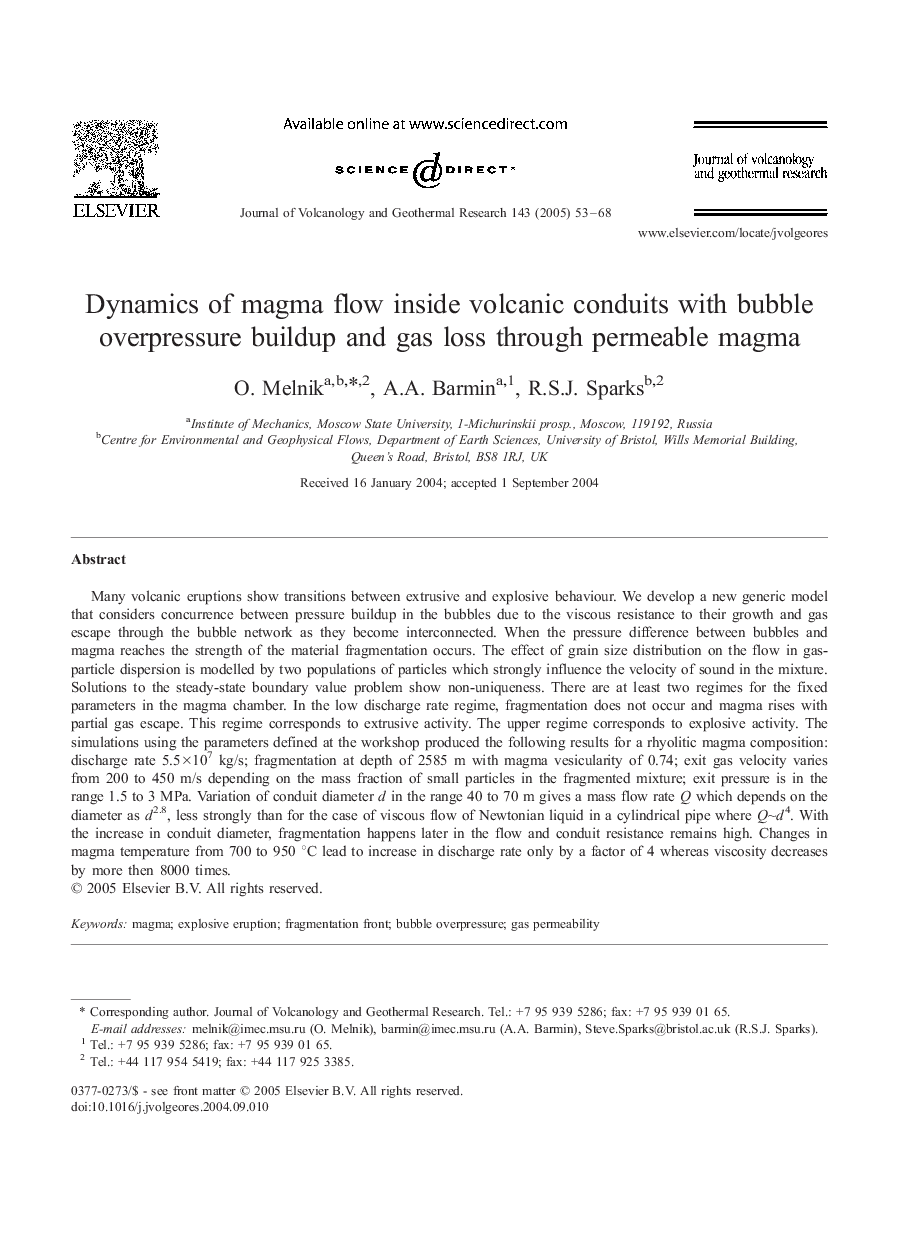| کد مقاله | کد نشریه | سال انتشار | مقاله انگلیسی | نسخه تمام متن |
|---|---|---|---|---|
| 9530993 | 1638496 | 2005 | 16 صفحه PDF | دانلود رایگان |
عنوان انگلیسی مقاله ISI
Dynamics of magma flow inside volcanic conduits with bubble overpressure buildup and gas loss through permeable magma
دانلود مقاله + سفارش ترجمه
دانلود مقاله ISI انگلیسی
رایگان برای ایرانیان
موضوعات مرتبط
مهندسی و علوم پایه
علوم زمین و سیارات
ژئوشیمی و پترولوژی
پیش نمایش صفحه اول مقاله

چکیده انگلیسی
Many volcanic eruptions show transitions between extrusive and explosive behaviour. We develop a new generic model that considers concurrence between pressure buildup in the bubbles due to the viscous resistance to their growth and gas escape through the bubble network as they become interconnected. When the pressure difference between bubbles and magma reaches the strength of the material fragmentation occurs. The effect of grain size distribution on the flow in gas-particle dispersion is modelled by two populations of particles which strongly influence the velocity of sound in the mixture. Solutions to the steady-state boundary value problem show non-uniqueness. There are at least two regimes for the fixed parameters in the magma chamber. In the low discharge rate regime, fragmentation does not occur and magma rises with partial gas escape. This regime corresponds to extrusive activity. The upper regime corresponds to explosive activity. The simulations using the parameters defined at the workshop produced the following results for a rhyolitic magma composition: discharge rate 5.5Ã107 kg/s; fragmentation at depth of 2585 m with magma vesicularity of 0.74; exit gas velocity varies from 200 to 450 m/s depending on the mass fraction of small particles in the fragmented mixture; exit pressure is in the range 1.5 to 3 MPa. Variation of conduit diameter d in the range 40 to 70 m gives a mass flow rate Q which depends on the diameter as d2.8, less strongly than for the case of viscous flow of Newtonian liquid in a cylindrical pipe where Qâ¼d4. With the increase in conduit diameter, fragmentation happens later in the flow and conduit resistance remains high. Changes in magma temperature from 700 to 950 °C lead to increase in discharge rate only by a factor of 4 whereas viscosity decreases by more then 8000 times.
ناشر
Database: Elsevier - ScienceDirect (ساینس دایرکت)
Journal: Journal of Volcanology and Geothermal Research - Volume 143, Issues 1â3, 1 May 2005, Pages 53-68
Journal: Journal of Volcanology and Geothermal Research - Volume 143, Issues 1â3, 1 May 2005, Pages 53-68
نویسندگان
O. Melnik, A.A. Barmin, R.S.J. Sparks,